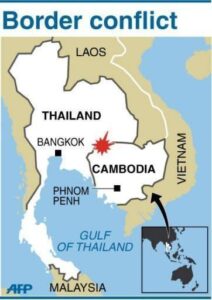Kailash Mansarovar Pilgrimage: A Sacred Journey to the Abode of Shiva
Introduction
The Kailash Mansarovar Yatra is one of the most revered and spiritually significant pilgrimages in the world. Located in the remote western region of Tibet, Mount Kailash stands tall at 6,638 meters, surrounded by mystical landscapes and sacred waters. This holy site attracts thousands of Hindu, Buddhist, Jain, and Bon devotees who believe that circumambulating Mount Kailash will cleanse them of sins and lead to spiritual enlightenment.
In this guide, we delve into the history, religious significance, travel routes, essential preparations, and FAQs to help you understand everything about this sacred journey.
Religious Significance of Kailash Mansarovar
Hinduism
In Hinduism, Mount Kailash is considered the abode of Lord Shiva and his consort Parvati. It is believed that Lord Shiva meditates at the peak, radiating peace and power. Devotees undertake the Kailash Yatra to seek blessings, liberation from the cycle of rebirth (moksha), and purification of the soul.
Buddhism
For Buddhists, Mount Kailash is the home of Demchok (Chakrasamvara), representing supreme bliss. It is also associated with the famous poet-saint Milarepa, who is said to have meditated in the region.
Jainism
In Jain tradition, Mount Kailash is known as Ashtapada, where the first Tirthankara, Rishabhadeva, attained liberation (moksha).
Bon Religion
The ancient Bon religion regards Kailash as the axis mundi — the spiritual center of the universe, and the site where the founder, Tonpa Shenrab, descended from heaven.
Mansarovar Lake: The Sacred Companion
Located about 20 km from Mount Kailash, Lake Mansarovar is the highest freshwater lake in the world at 4,590 meters. According to Hindu mythology, it was created by Lord Brahma and is considered a symbol of purity. Pilgrims often take a dip in the lake and perform rituals on its banks to cleanse sins and fulfill spiritual aspirations.
Kailash Mansarovar Yatra Routes
There are two primary ways to embark on this journey:
1. Through India (via MEA-organized Yatra)
Organized by the Ministry of External Affairs (MEA), Government of India, this route can be undertaken through:
Lipulekh Pass (Uttarakhand) – The traditional and more challenging route involving trekking.
Nathula Pass (Sikkim) – A newer, shorter, and less strenuous route using vehicles and helicopters.
2. Through Nepal
Private tour operators conduct trips from Kathmandu, offering a more accessible journey via Simikot, Hilsa, and Purang. This route involves flying, short treks, and vehicular travel.
Kora: The Sacred Circumambulation
The act of walking around Mount Kailash — called Kora (Parikrama) — is a core ritual in the pilgrimage.
Length: ~52 km (3 days)
Direction: Clockwise for Hindus and Buddhists; counterclockwise for Bon followers
Altitude: The trek reaches a high point at Dolma La Pass (5,630 meters)
Completing one full Kora is believed to absolve a lifetime of sins. Doing it 108 times is said to lead to instant salvation.
Best Time to Visit Kailash Mansarovar
May to September is considered the ideal time due to favorable weather and clearer skies.
Avoid monsoon season (July–August) for safety and comfort.
Essential Preparations
1. Physical Fitness
Due to high altitudes and harsh terrains, physical fitness is crucial. Prepare with:
Cardiovascular exercises (walking, running)
Breathing exercises (Pranayama)
Altitude acclimatization
2. Medical Check-Up
All pilgrims must pass a health screening to ensure they can endure high-altitude conditions.
3. Required Permits and Documents
Valid Passport (with minimum 6 months validity)
Chinese Visa and Tibet Travel Permit
MEA approval (for Indian routes)
4. Packing Essentials
Warm layered clothing
High-ankle trekking boots
Sunglasses, sunscreen, lip balm
Personal medications
Energy bars and hydration packs
Cultural Etiquette and Safety Tips
Always walk clockwise around sacred sites unless your religion dictates otherwise.
Do not climb Mount Kailash – it is forbidden and considered sacrilegious.
Respect local customs and Tibetan beliefs.
Drink plenty of water and rest adequately.
Kailash Mansarovar Yatra Cost and Duration
Duration: 10–22 days (depending on the route)
Cost: ₹1.5 – ₹3.5 lakhs (USD $2,000–$4,500), depending on route and package
Private tours via Nepal are generally more expensive but more comfortable.
Conclusion
The Kailash Mansarovar Yatra is not just a physical journey—it’s a spiritual odyssey that transcends religious boundaries. Whether you’re drawn by faith, adventure, or curiosity, this pilgrimage offers a rare opportunity to connect with nature, culture, and the divine in one of the world’s most mystical landscapes.
Frequently Asked Questions (FAQs)
1. Who can go for the Kailash Mansarovar Yatra?
Anyone in good health between the ages of 18 and 70 can apply. Medical fitness is mandatory.
2. Do I need a visa for Tibet/China?
Yes, you need a Chinese visa and Tibet Travel Permit, which are typically arranged by tour operators or the Indian government.
3. Is it safe to travel to Mount Kailash?
While the terrain is challenging and altitude sickness is a risk, it’s generally safe if properly prepared and guided.
4. Can I take a dip in Lake Mansarovar?
Yes, many pilgrims bathe in the lake as part of religious rituals, although the water is extremely cold.
5. Are there accommodations along the route?
Yes, basic guesthouses and tented camps are available. Facilities are minimal but sufficient for the journey.
6. How difficult is the Kora around Mount Kailash?
The trek is moderately difficult due to high altitude. Proper acclimatization and fitness help ensure completion.






